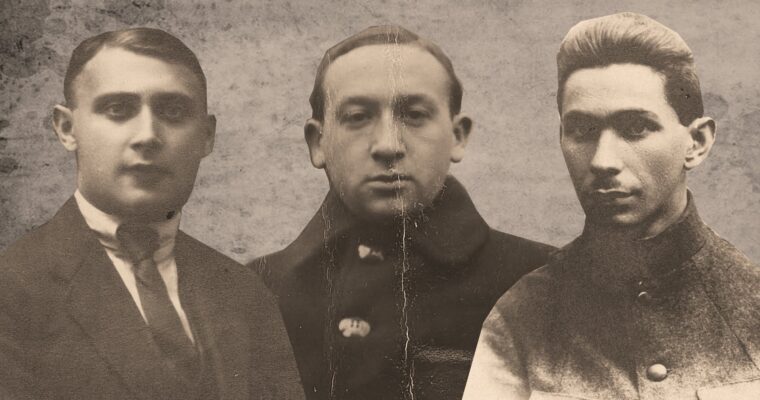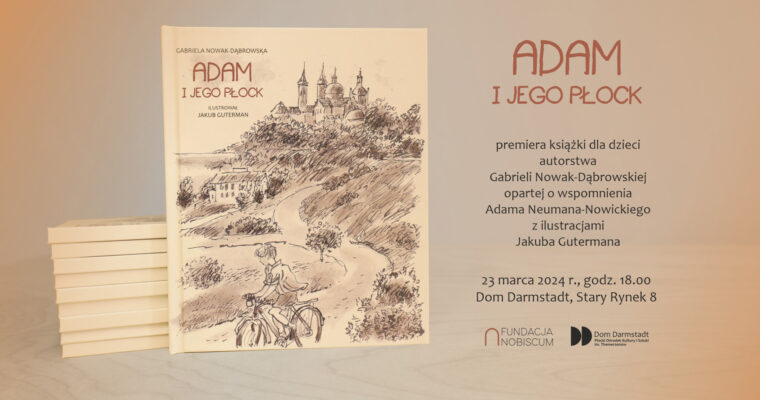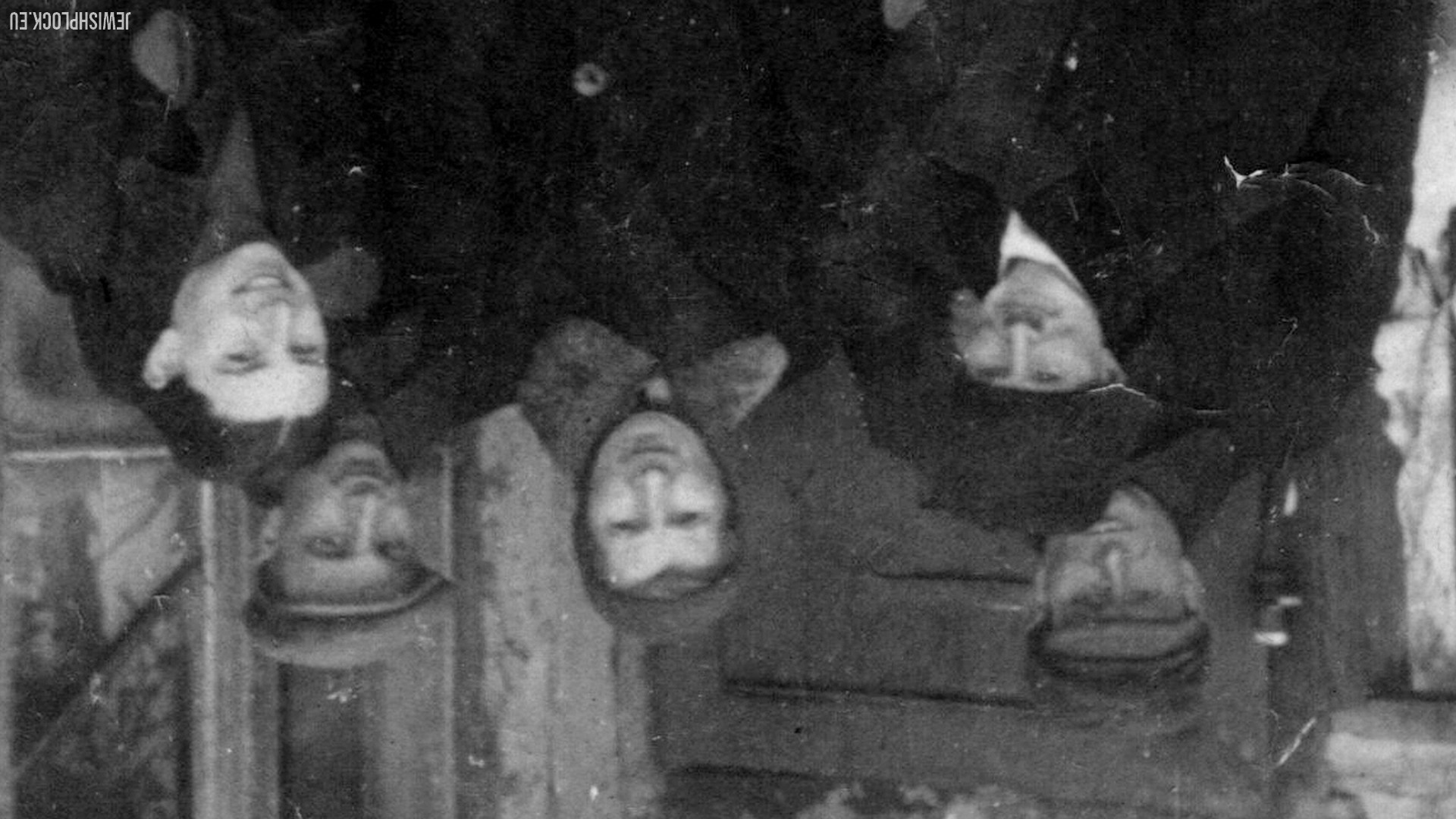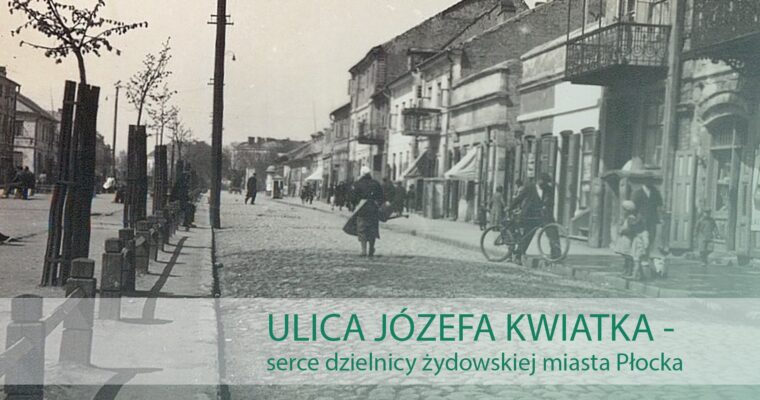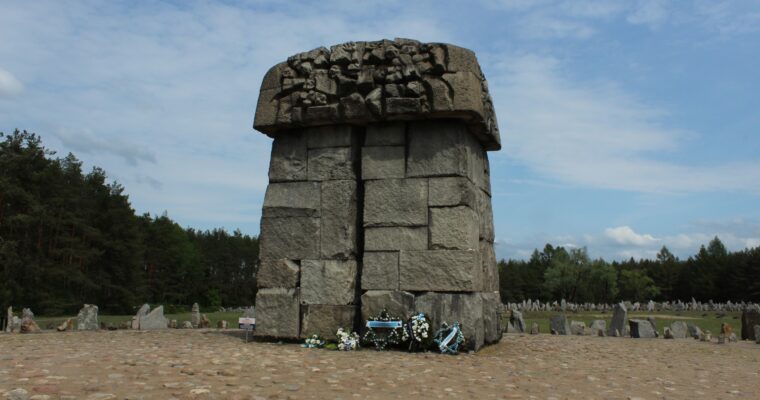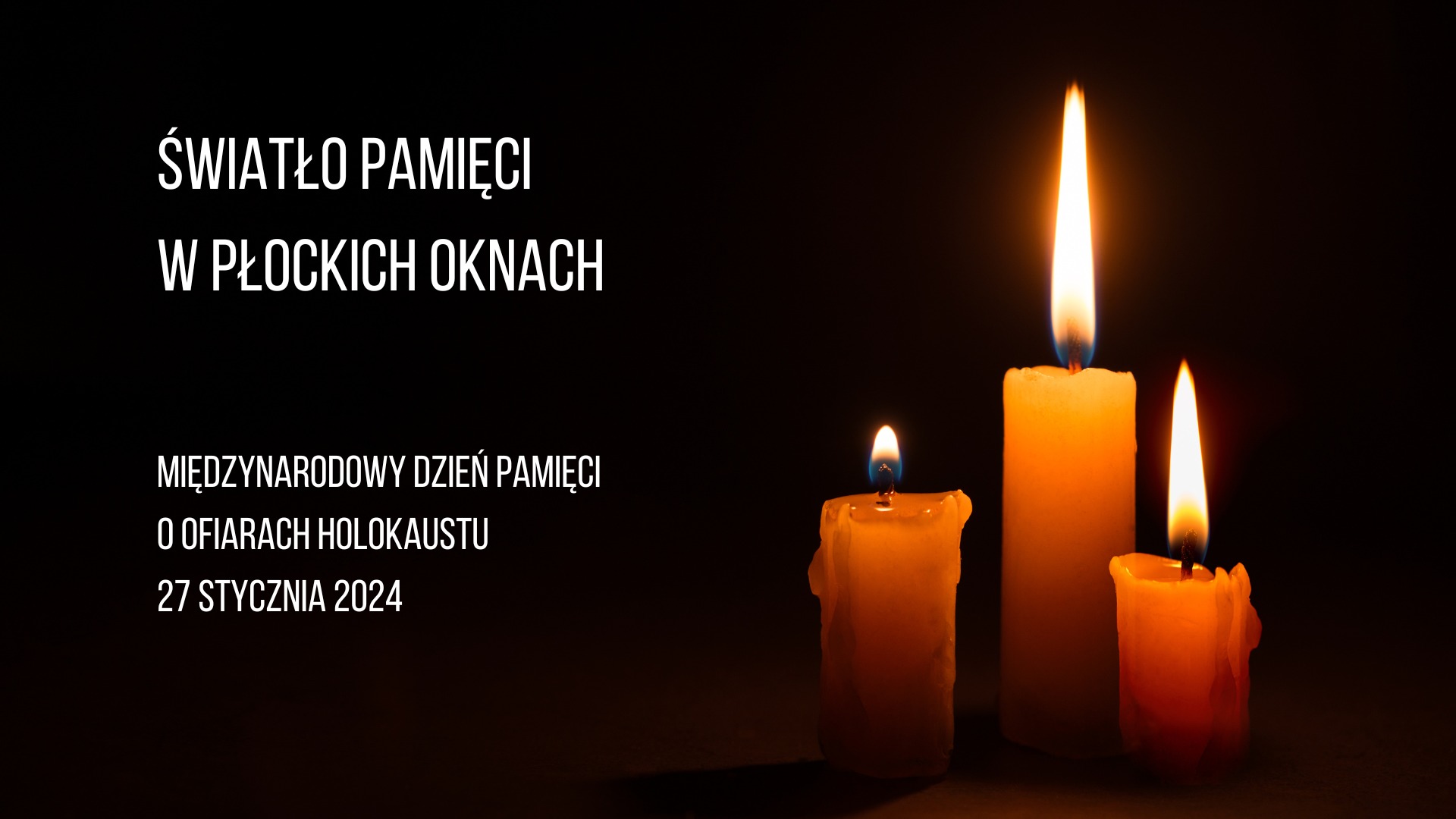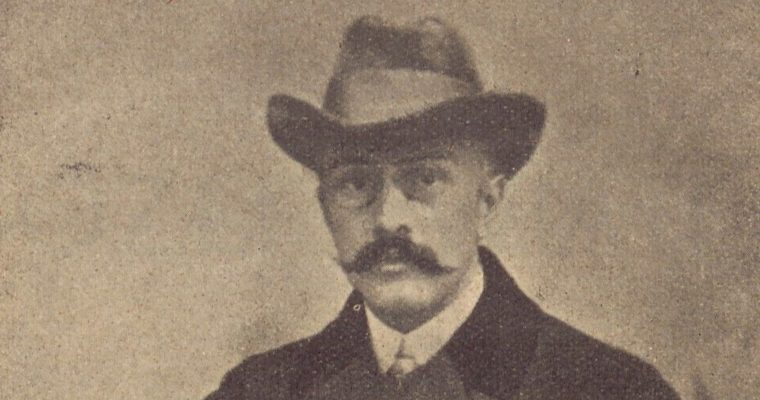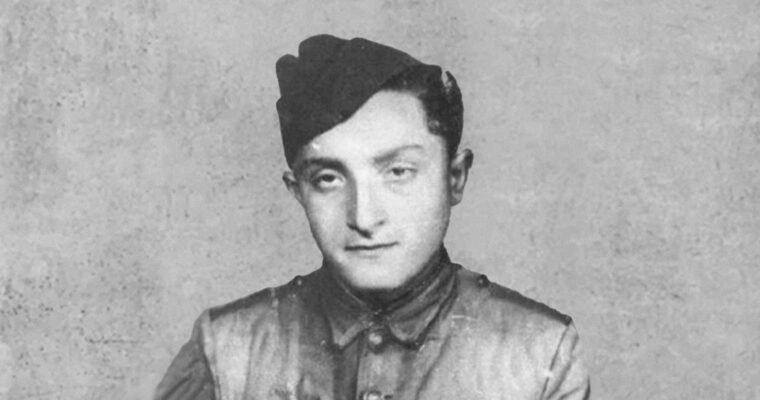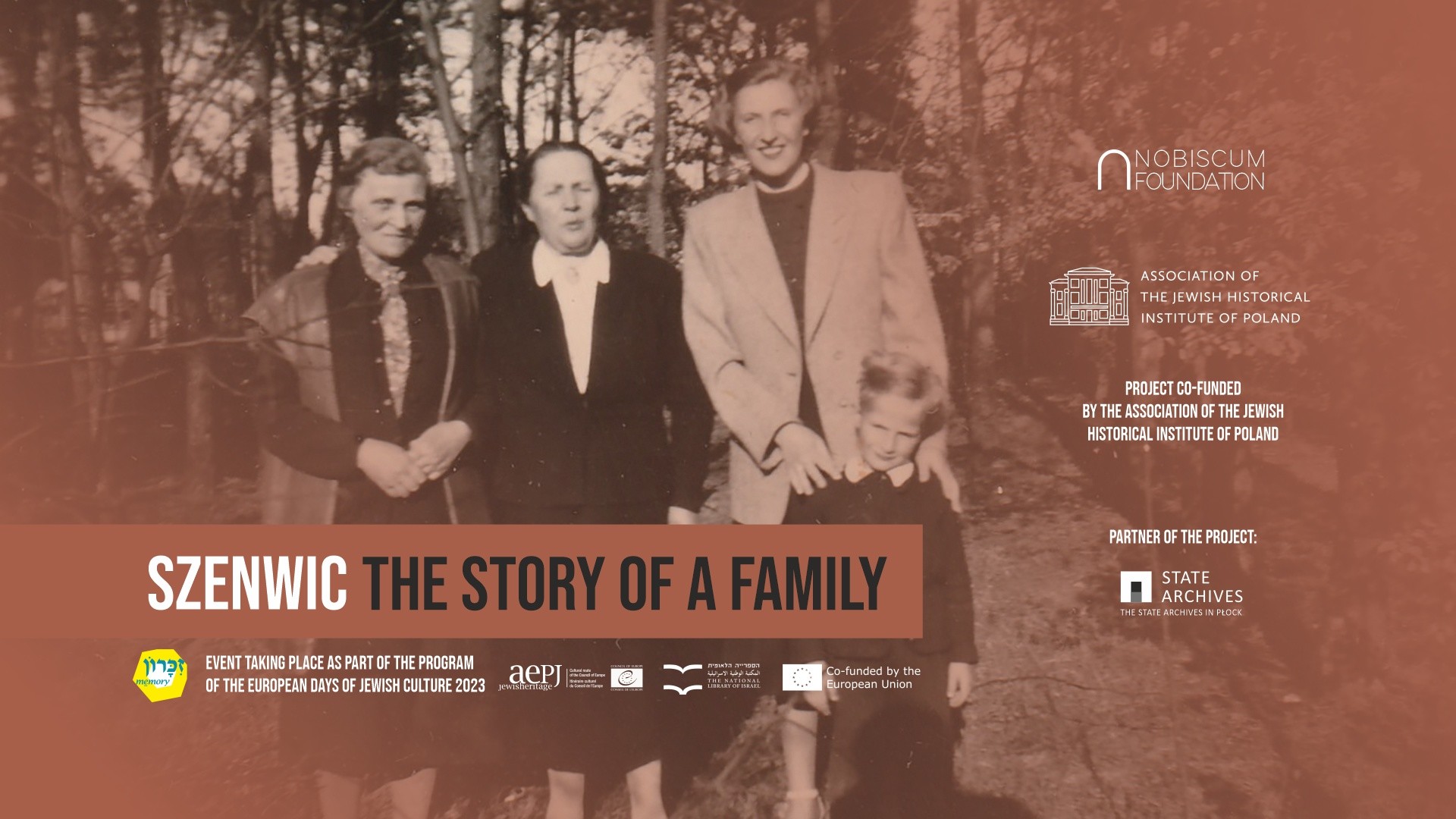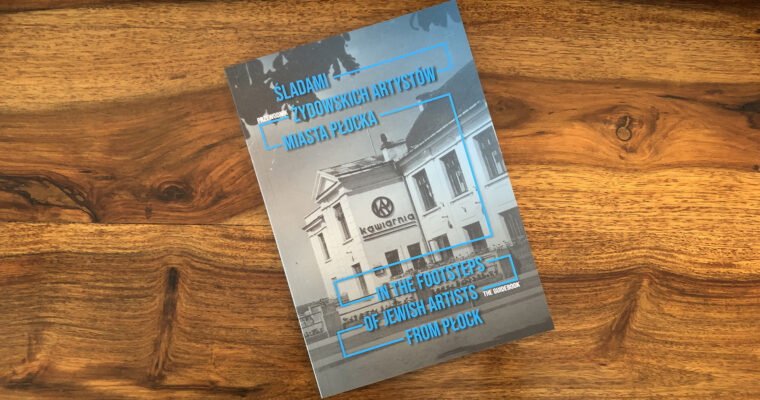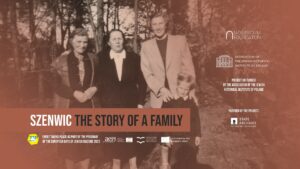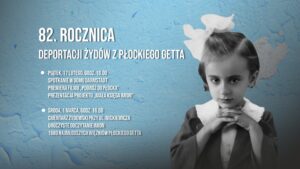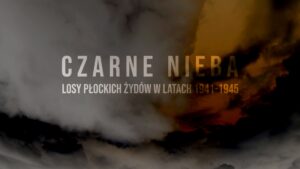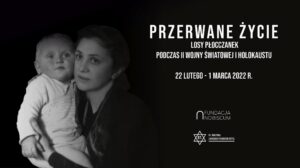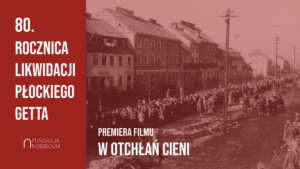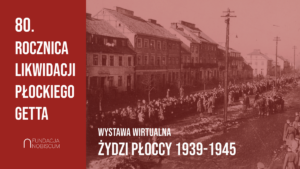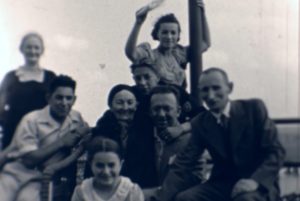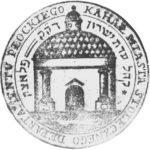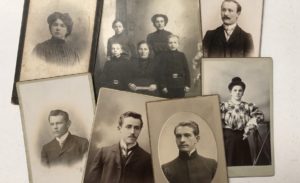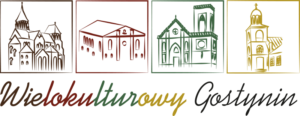The cold winter of 1941. Against the background of a neglected building on Kwiatka Street in Płock, six people stand in the snow. Chawa Papierczyk – a young woman with dark, smoothly combed hair, parted in the middle. A smile appears on her face. All pre-war photos of Chawa show her as a joyful, smiling woman. Rachelka is standing in front of her. She is three and a half years old. Mother and daughter pose with Bajla Lichtensztajn (Chawa’s mother) and Icek Grosman (grandfather) and (probably) Mojsze Lichtensztajn and Majer Grosman.
There are round patches on Chawa’s and Icek’s coats, on the left side of their chests…
The photo was taken in the Płock ghetto. A little over a month before its liquidation in February and early March 1941. Chawa wrote on its back the date “January 9, 1941” and further we read: “Abram! May this photo ease your suffering and longing for us…” Chawa, Rachelka, Bajla, Icek, Mojsze and Majer shared the fate of thousands of Płock Jews deported to the transit camp in Działdowo and further to various towns of the Radom district. Today is the 83rd anniversary of the beginning of the liquidation of the Płock ghetto and deportation of its residents.
The photo comes from the private collection of Itai Vishnia. It is one of several dozen photographs that will be included in a publication devoted to the Papierczyk family prepared by the Nobiscum Foundation, entitled “For you, who will never be forgotten…”
